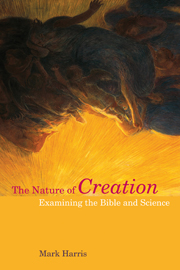Book contents
- Frontmatter
- Contents
- Preface
- Abbreviations
- 1 Introduction
- 2 Creation According to Modern Science
- 3 Creation According to the Bible I: Genesis
- 4 Creation According to the Bible II: The Creation Motif
- 5 The Framework of Biblical Cration
- 6 Creator–creation: How can a Ralationship be Described?
- 7 The Fall
- 8 Suffering and Evil
- 9 Scientific Eschatology and New Creation
- 10 Conclusions
- Bibliography
- Index of Ancient Citations
- Index
9 - Scientific Eschatology and New Creation
- Frontmatter
- Contents
- Preface
- Abbreviations
- 1 Introduction
- 2 Creation According to Modern Science
- 3 Creation According to the Bible I: Genesis
- 4 Creation According to the Bible II: The Creation Motif
- 5 The Framework of Biblical Cration
- 6 Creator–creation: How can a Ralationship be Described?
- 7 The Fall
- 8 Suffering and Evil
- 9 Scientific Eschatology and New Creation
- 10 Conclusions
- Bibliography
- Index of Ancient Citations
- Index
Summary
SCIENTIFIC ESCHATOLOGY: MODELS OF THE END OF THE WORLD
The creation motif in the Bible is not complete until we have considered its complement, the “new creation”. The beginning of the world will only find its true meaning in its end, and its consummation in the new beginning (Pannenberg 1994: 142–6). That is, the evolution of the physical universe – highly contingent from our perspective – has a theological significance which will only be apparent from the perspective of its end point. But there is an important question here: to what extent do the Bible's eschatological texts predict the literal fate of the physical world? Could its apocalyptic predictions instead be meant metaphorically for social, political or religious transformation in history? Two thousand years of Christian tradition have tended to assume that these texts are meant to be taken literally, but we will question this, after reviewing “scientific eschatologies”!
The end of human civilization and the end of the earth
There have long been those who have warned that “the end is nigh”. Not only is this a theme of perennial fascination for some religious believers, but it has been a popular subject matter for countless novels and films of the twentieth century in the science fiction and horror genres, many inspired by H. G. Wells's The War of the Worlds (1898).
- Type
- Chapter
- Information
- The Nature of CreationExamining the Bible and Science, pp. 161 - 184Publisher: Acumen PublishingPrint publication year: 2013



